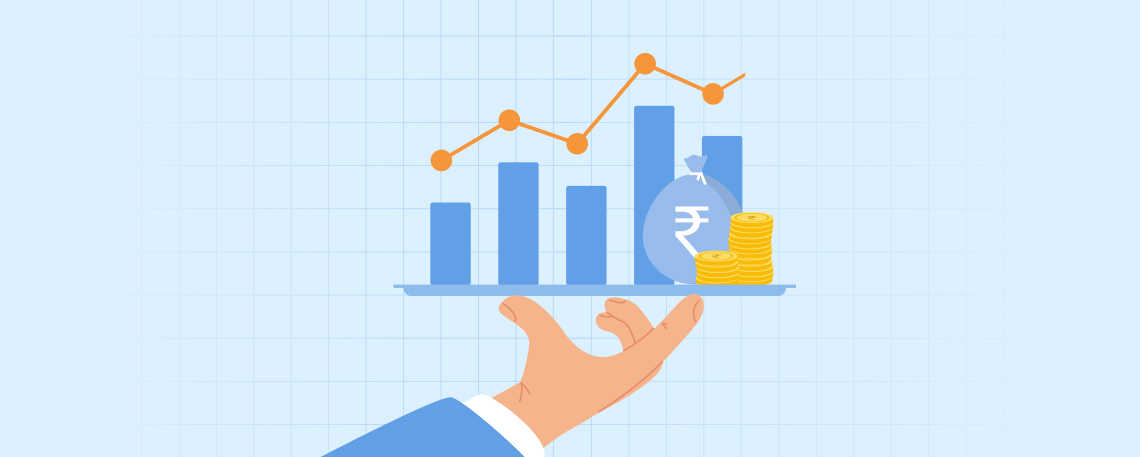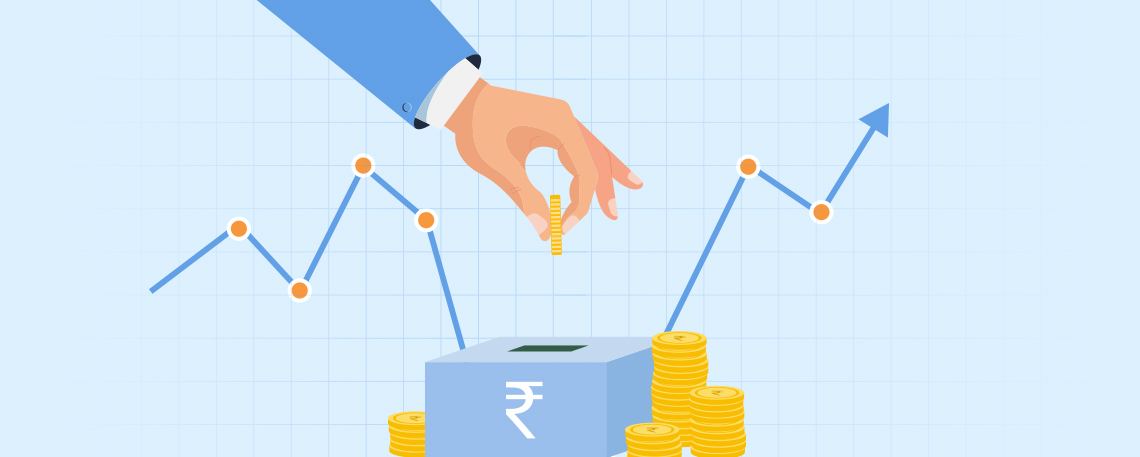Are profit making companies really better than the loss making ones?
August 07, 2017
|
Well, this may ‘seem’ like a really dumb question to ask, or to even think about for that matter, but in actuality, it has far more depth than it reveals. I mean given a choice, who would like to invest in a company that makes losses, if there is an alternate company on the table which makes crores of profits? And yes, why would you want to run a business or even invest in one, which say, hasn’t made “money” in the past 3 or 5 or even 7 years for that matter? It just doesn’t feel right, right?
We, as humans, have been downright brain-wired with the fact that a company is only as good as its profits! But the fun fact is, that the one thing we fail to understand (almost always), or rather fail to analyze, is the sustainability factor. We’ll come on to that part in the latter half of this article. As of now, let’s concentrate on how important (or not so important) the profits are, to the company itself, and to you as an investor in it. And since we’ve mentioned the ‘not so important’ part in the previous line, we will also discuss the alternative if that is the case.
Now, coming to the sovereignty that profits have been holding for all times known, let us first try to comprehend on why exactly have they been perceived as so relevant. Consider the example of Eicher Motors Ltd., which owns one of India’s most prominent two-wheeler brands, Royal Enfield, for this particular case. Almost 10 years ago, before Mr. Ravichandran joined Eicher Motors, the latter was almost set to shut Royal Enfield down, due to soaring losses and a consistently decreasing sales number of its iconic motorcycle brand. But, due to his, and Mr. Siddhartha Lal’s zeal and hard work, Royal Enfield was turned around and it made a stellar comeback from the dead. From a meager 36,021 units sold in FY2008, the company sold a whopping 6,66,490 units in FY2017, registering a splendid CAGR of close to 34% in 10 years. The effect was visible in the PAT and the PAT Margins of the company too, which grew from Rs. ~55 crores with a 2.42% margin in FY2008, to ~Rs. 1,525 crores with a 20.94% margin in FY2017.
Let’s look at what exactly happened and what to look for in the numbers:
| Particulars/Year | CY08 | CY09 | CY10 | CY11 | CY12 |
|---|---|---|---|---|---|
| Profits Excluding Exceptional items | 27.94 | 83.39 | 188.92 | 308.77 | 324.26 |
| Cash Flows from operations | -89.00 | 368.49 | 335.95 | 404.99 | 496.04 |
The above exhibit shows the difference between accounting profits which the company was earning and the actual cash the company was generating. What was the component, you may ask, that was pushing the cash flows of the company to higher levels than profits earned?
Depreciation is an accounting method of allocating the cost of a tangible asset over its useful life. Depreciation is a non-cash expenditure. So let’s have a look at what is depreciation of the company during the same year:
| CY08 | CY09 | CY10 | CY11 | CY12 | |
|---|---|---|---|---|---|
| Depreciation | 36.89 | 53.88 | 57.30 | 63.96 | 82.17 |
Another component which moves the cash flow of the company into negative or positive zone is working capital movement. If we take a look at working capital during the same year:
| CY08 | CY09 | CY10 | CY11 | CY12 | |
|---|---|---|---|---|---|
| Working Capital | 117.94 | -101.86 | -172.14 | -21.56 | -19.99 |
| Change in Working capital | -219.80 | -70.28 | 150.58 | 1.57 |
Now, If we add profits with depreciation (non-cash expenditure) and changes in working capital (negative figure denotes money freeing up from business and positive number is money getting stuck in working capital) we get the following:
| CY08 | CY09 | CY10 | CY11 | CY11 | |
|---|---|---|---|---|---|
| Cash Accumulation | -89.00 | 357.07 | 316.50 | 222.15 | 404.86 |
So post-CY09, the company has been able to generate more cash vis-à-vis its profit. Now let’s look at what the company did with the cash it accumulated.
| CY08 | CY09 | CY10 | CY11 | CY11 | |
|---|---|---|---|---|---|
| Cash + Investments | 1231.80 | 1461.52 | 1700.99 | 1704.08 | 1441.95 |
| Changes | 229.72 | 239.47 | 3.09 | -262.13 | |
| Debt | 165.61 | 126.37 | 95.64 | 0 | 0 |
| Changes | -39.24 | -30.73 | -95.64 | 0 | |
| Gross Block | 678.30 | 743.69 | 811.28 | 988.72 | 1525.98 |
| Changes | 65.39 | 67.59 | 177.44 | 537.26 | |
| Dividend | 14.05 | 18.69 | 29.63 | 43.19 | 54.00 |
| Dividend tax | 2.39 | 3.18 | 4.92 | 7.01 | 8.76 |
| Total Uses of Cash | 356.22 | 372.34 | 326.37 | 337.89 |
A company generating greater cash flow than profits over the years indicates its ability to deploy its cash to better use. In this case, Eicher Motors was able to pay off the debt, invest in increasing its manufacturing capacity, pay dividend and also invest the additional cash. The above example clearly indicates that.
You decide for yourself: Looking at such mind-blowing numbers and growth, wouldn’t you want to be a part of this superb company and ride the growth all along? Obviously yes… and that is exactly what reflected in Eicher Motors’ stock price too. From a not-so-eye-catching ~Rs. 615 crores in market cap with a stock price of ~Rs. 225, the company now boasts a solid ~Rs. 83,680 crores as its market cap, with an even stellar looking ~Rs. 30,740 per share.
Hence, paraphrasing everything we just discussed about Eicher Motors:
| FY2008 | FY2017 | CAGR Growth (10 Years) | |
|---|---|---|---|
| Units Sold | 36021 | 666490 | 34.00% |
| PAT | Rs. 55 Cr | Rs. 1525 Cr | 39.50% |
| PAT Margin | 2.42% | 20.94% | 24.08% |
| Market Cap | Rs. 615 Cr | Rs. 83,680 Cr | 60.44% |
The question to be asked here is - how exactly did all of this happen? Did the management work hard? Yes! No second questions there! But operationally, from a business perspective, what enabled them to materialize those pleasing profits for their shareholders? The answer lies in the cash flows that the company turned around so swiftly and so efficiently. Have a look -> From a negative Rs. (-)89 crores with respect to cash from operating activity in FY2008, the company churned a healthy Rs. (+)2,282 crores in FY2016, which shows that Eicher boasts an all-time sorted cash inflow and outflow, the surplus of which is again re-invested into the business, thereby consistently increasing earnings potential and thereby mushrooming investor wealth. If that weren’t the case, then the ~Rs. 160 crores of debt which they had on their balance sheet, would have been a constant headache for them, throughout their journey, which also wouldn’t have been so stellar because of the constant finance costs that they would’ve been bearing on the same! But, all ‘n all, they did manage to take care of that potential problem, simply by some healthy cash flow management.
Now, coming to the other side of this topic, we will shift our focus to a more interesting aspect, wherein, we will try and understand a company, which even though had a healthy and a positive PAT and PAT growth, still got dismantled (well, even barred from being traded now), solely because the investors failed to digest the crumbling cash flow numbers and instead focused solely on the rosy profits and its growth. We are talking about a computer hardware – cum – IT solutions company called Ricoh India Ltd. Ricoh is a global technology company specializing in office imaging equipment, production print solutions, document management systems and IT services. Headquartered in Tokyo, Ricoh Group operates in about 200 countries and regions. In FY2017, Ricoh Group had worldwide sales of ~$18.2 Billion (~Rs. 1.2 lakh crores). In fact, its Indian arm Ricoh India Ltd. i.e. the company under consideration, itself generated close to Rs. 1,250 crores in revenues.
Let’s dig deeper into it:
Difference in profit and its cash flow from operations:
| Particulars/Year (Rs. Cr) | FY10 | FY11 | FY12 | FY13 | FY14 | FY15 | FY16 |
|---|---|---|---|---|---|---|---|
| Profits Excluding Exceptional items | 17.24 | 16.38 | -2.61 | -1.32 | 17.23 | 33.90 | -1117.73 |
| Cash Flows from operations | 35.39 | -9.44 | -63.02 | -96.67 | -58.85 | -222.41 | -1481.84 |
What was the company doing? Why, despite profits, the company was not able to generate enough cash?
Well the answer lies in its business economics. Being an IT company, it didn’t have much depreciation:
| (Rs. Cr) | FY10 | FY11 | FY12 | FY13 | FY14 | FY15 | FY16 |
|---|---|---|---|---|---|---|---|
| Depreciation | 2.96 | 3.61 | 7.31 | 8.09 | 16.15 | 21.44 | 17.01 |
Then why was the company generating negative cash flow from operations? Let’s look at what is happening with its working capital:
| (Rs. Cr) | FY10 | FY11 | FY12 | FY13 | FY14 | FY15 | FY16 |
|---|---|---|---|---|---|---|---|
| Working Capital | 38.23 | 47.79 | 80.00 | 114.13 | 219.45 | 516.21 | 634.23 |
| Change in Working capital | 9.56 | 32.21 | 34.13 | 105.32 | 296.76 | 118.02 |
Here, we can see that the company requires working capital year after year. Why does this happen? Sometimes a company has to give higher credit to customers and, in turn, the suppliers stop giving the company credit; this happens when the business economics turn negative. And that is what happened with Ricoh.
Let’s look at cash accumulation of the business:
| (Rs. Cr) | FY10 | FY11 | FY12 | FY13 | FY14 | FY15 | FY16 |
|---|---|---|---|---|---|---|---|
| Cash Accumulation | 10.43 | -27.51 | -27.36 | -71.94 | -241.42 | -1218.74 |
Well, that gives us a clear picture. Due to pressure from suppliers and debtors, the company was not able to generate cash. In fact, the company had to put in more cash over the years and that led to worsening the balance sheet and therefore, destroying the capability of generating profits in future.
Let’s look at how the company was able to fund this requirement.
| (Rs. Cr) | FY10 | FY11 | FY12 | FY13 | FY14 | FY15 | FY16 |
|---|---|---|---|---|---|---|---|
| Cash + Investments | 38.37 | 36.39 | 54.41 | 72.00 | 38.34 | 70.39 | 59.81 |
| Changes | -1.98 | 18.02 | 17.59 | -33.66 | 32.05 | -10.58 | |
| Debt | 0 | 0 | 114.71 | 254.49 | 357.33 | 701.52 | 2345.01 |
| Changes | 0 | 114.71 | 139.78 | 102.84 | 344.19 | 1643.48 | |
| Gross Block | 51.71 | 57.30 | 84.76 | 90.86 | 142.58 | 144.14 | 138.62 |
| Changes | 5.59 | 27.46 | 6.10 | 51.72 | 1.56 | -5.52 | |
| Dividend | 0 | 0 | 0 | 0 | 0 | 3.98 | 0 |
| Dividend tax | 0 | 0 | 0 | 0 | 0 | 0.81 | 0 |
| Total Uses of Cash | 7.57 | -69.23 | -116.09 | -84.78 | -305.79 | -1659.59 |
Here is the catch! The company was regularly borrowing money to fund its regular working capital requirement! And that also worsened the balance sheet.
But, the point to be looked at is the mismatch between its growth in profits and the horrendous cash flows that it was registering during this so-called growth phase. During the period from FY2014 to FY2015, the company reported a 56.18% rise in its revenues from ~Rs. 1,050 crores to ~Rs. 1,650 crores, with a colossal 96.75% rise in its PAT, from Rs. 17.23 crores to Rs.33.90 crores. In fact, it had a loss making FY2013, during which it reported a negative PAT of Rs. (-)1.32 crores. The result? From the end of FY2013 till it reported its Q1FY2016 earnings, the stock rose by a mammoth ~660%. I mean, why wouldn’t it? For a company which has almost 3Xed its revenues and more than 30Xed its profits, such a huge growth in stock price doesn’t seem unjustifiable.
Paraphrasing,
| FY2013 | FY2015 | |
|---|---|---|
| Revenues | Rs.633.12 Cr | Rs. 1637.82 Cr |
| PAT | -Rs. 1.32 Cr | Rs. 33.90 Cr |
| PAT Margin | -0.21% | 2.07% |
| Stock Price | ~Rs. 130 | ~Rs. 1000 |
But something went terribly wrong! Just for your information, SEBI has barred Ricoh India Ltd. from trading (at least as of 30th May 2017) due to penal reasons for fudging the books, thereby under-reporting and falsification of its sales and profits, overstated by Rs. 1,304.80 crores (sales) and Rs. 1,105.40 crores (cost). But the question, especially for those who invested during its bull run is, how can one ignore or even give subdued importance to its plummeting cash flows, which stood at a negative Rs. (-)96.67 crores at the end of FY2013, to a terrifying Rs. (-)222.41 crores at the end of FY2015?
Ask yourself this – How can it be possible for a company to consistently multiply its profits, that too exponentially, alongside generating negative Cash from Operating Activity for five straight years i.e. Rs. (-)9.44 crores in FY2011 to Rs. (-)222.41 crores in FY2015? This clearly proved that the amount of cash going out of the company easily overshadowed the amount coming in. To make matters worse, the cash in bank too increased by a meager Rs. 23.42 crores in those 5 years, and the short term borrowings went from a null to a mammoth Rs.501.52 crores during the same period. It also had an unsecured loan worth Rs. 200 crores by the end of FY2015. Don’t you think, that such a deteriorating balance sheet and a horribly worsening cash flow number is an almost certain call for trouble? Yes! And that is exactly what happened!
Finally, at the end of July 2016, the company admitted to accounting violations and falsification of books, and the stock price did not take it nicely at all. It tanked by more than 80% from its highs in the coming 5 months, before getting suspended from further trading.
So what exactly did we learn from this read? Or, if we rephrase it, the question to be asked is – How exactly you can and should look at those profit making quarters, and not make the mistake of buying stocks based on those mouth watering profit numbers alone? The answer lies in the cash flows supporting those profits!
It’s actually quite simple – It is not the case that a company will make twice the profits, if it simply starts generating twice the revenues it generates currently. The necessity is the cash flows that it happens to maintain, over this duration, which will help support the company generate those revenues itself in the first place. Just imagine – that same company, during its expansion, made a huge sale, also pleasingly profitable, but the client fails to pay up and there is no cash coming in any time soon. Hence, on the P/L statement, the company shows a healthy increase in revenues and profits. But when an informed investor closely scrutinizes the cash flows and the balance sheet, she/he might find some huge gaps and negatives. This is when the investor has to take a step back and re-analyze whether the revenue that the company is expecting is visible or not? And if not, how will the company take care of the vacuum created by that temporary delay of money. If conditions and answers don’t seem viable, it is best to EXIT. And this is exactly what happened in our aforementioned example of Ricoh India Ltd.
The bottom line: You need both, cash flows as well as profits to sustain and grow a business, though not in equal measures at every point. The vision starts a business, profitability helps it become attractive, but the cash flow is the day-to-day driver. If the company has enough cash to survive, it can expand to a more profitable business via a strong cash flow management. It won’t succumb to destruction or closure when the expansion takes longer than expected and that is what that matters in growing businesses.
Even though it is a loss-making business, eventually, a healthy cash flow management and a calculated expansion plan makes it a profitable one. Do let us know if you think otherwise! Happy Investing! :)




